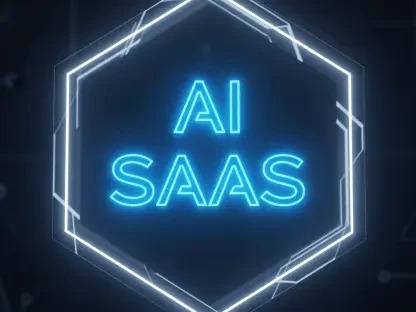Understanding the EHS Software Landscape
In today’s fast-paced industrial environment, imagine a global enterprise grappling with the daunting task of ensuring compliance with ever-changing environmental, health, and safety regulations while striving to minimize risks across multiple locations. Environmental, Health, and Safety (EHS) software has emerged as a cornerstone for such organizations, playing a pivotal role in managing compliance, mitigating risks, and promoting sustainability. This technology enables companies to streamline complex processes, ensuring safer workplaces and reducing environmental impact through structured data management and reporting.
The EHS software market is expansive, with key players competing to address the diverse needs of enterprises worldwide. Major vendors are increasingly incorporating advanced technologies, particularly artificial intelligence (AI), to transform traditional EHS practices into more proactive and predictive systems. The shift toward cloud-based solutions has further intensified competition, as these platforms offer scalability, real-time access, and seamless updates, meeting the demands of global businesses operating in dynamic regulatory landscapes.
This technological evolution underscores a broader trend of digital transformation within the industry. As enterprises seek integrated solutions to handle multifaceted challenges, the competitive dynamics among vendors focus on delivering robust, user-friendly tools. The ability to adapt to varying regional compliance requirements while providing actionable insights is becoming a defining factor, positioning technology-driven innovation at the heart of EHS advancements.
The Rise of AI in EHS Software
Key Trends Driving AI Adoption
AI is rapidly becoming a game-changer in EHS software, with generative AI and automation leading the charge in reshaping how organizations manage safety and compliance. These technologies enable systems to go beyond static reporting, offering dynamic tools that adapt to real-time data and user inputs. The growing expectation among users for seamless integration with existing workflows is pushing vendors to develop AI solutions that enhance usability and accessibility across platforms.
Market drivers such as the need for operational efficiency and significant cost savings are accelerating AI adoption. Enterprises are looking for ways to optimize resource allocation and reduce downtime caused by safety incidents, and AI offers promising avenues through features like automated incident analysis and trend identification. Additionally, evolving user demands for intuitive interfaces are shaping how these tools are designed to fit into daily operations without disrupting established processes.
One of the most compelling opportunities lies in addressing longstanding gaps in traditional EHS systems. AI-powered capabilities, such as real-time risk assessment and predictive analytics, allow organizations to anticipate potential hazards before they escalate. This proactive approach not only enhances safety outcomes but also aligns with the broader goal of fostering a culture of prevention over reaction within workplaces.
Market Insights and Growth Projections
Independent research from Verdantix has positioned Benchmark Gensuite as an industry pacesetter in AI integration for EHS software, highlighting its innovative approach in a field where many competitors struggle with limited offerings. The firm’s Product Benchmark and EHS Software Green Quadrant reports underscore the company’s ability to embed AI natively into its platforms, providing a distinct edge over fragmented or add-on solutions prevalent in the market.
Data on AI-driven EHS software points to impressive growth, with measurable impacts already evident among subscribers. For instance, subscribers using Benchmark Gensuite’s tools have reported saving an average of 3,637 hours and achieving over $300,000 in cost savings, reflecting the tangible benefits of AI in optimizing enterprise resources. These figures illustrate the immediate value delivered by advanced systems in reducing manual workloads and enhancing decision-making.
Looking ahead, the adoption of AI is expected to redefine market performance and competitive positioning through 2027. As more organizations recognize the strategic importance of predictive tools and automation, the demand for scalable, integrated AI solutions will likely surge. This trajectory suggests a future where EHS software not only supports compliance but also drives operational excellence through data-driven insights.
Challenges in AI Integration for EHS Software
The journey toward widespread AI adoption in EHS software is not without hurdles, as the industry grapples with fragmented systems that often hinder seamless implementation. Many organizations still rely on legacy infrastructure, which complicates the integration of modern AI tools and results in inefficiencies. High implementation costs further exacerbate the challenge, creating barriers for smaller enterprises seeking to modernize their safety protocols.
Technological limitations are compounded by market-driven issues, such as unclear claims about return on investment from some vendors. The risk of siloed AI tools—where solutions fail to communicate across platforms—poses another significant obstacle, leading to disjointed user experiences. These challenges highlight the need for a cohesive strategy that prioritizes compatibility and long-term value over short-term gains.
Potential solutions are emerging, with unified platforms offering a way to bridge gaps in existing systems. Strategic partnerships also play a vital role, as seen in Benchmark Gensuite’s approach to combining in-house development with external collaboration. By focusing on interoperable architectures and user-centric design, the industry can move toward overcoming these barriers and unlocking AI’s full potential in EHS management.
Regulatory and Governance Considerations in AI-Driven EHS
Navigating the regulatory landscape is a critical aspect of integrating AI into EHS software, particularly concerning data security and workplace safety standards. Compliance with global and regional laws ensures that AI tools handle sensitive information responsibly while maintaining the integrity of safety processes. This requires vendors to stay abreast of evolving policies that govern technology deployment in industrial settings.
Benchmark Gensuite demonstrates a strong commitment to transparency and governance by implementing controlled rollouts of AI features and providing clear explanations of generated outputs. Such practices build trust among users, ensuring that AI-driven decisions are both understandable and aligned with organizational goals. This focus on accountability sets a standard for how technology can be responsibly applied in regulated environments.
The broader implications of regulatory changes cannot be overlooked, as they shape the pace and direction of AI deployment in EHS. Aligning innovations with legal and ethical requirements is essential to avoid penalties and maintain stakeholder confidence. As policies continue to adapt to technological advancements, companies that prioritize compliance will likely gain a competitive advantage in the market.
Benchmark Gensuite’s Vision for the Future of AI in EHS
Benchmark Gensuite is carving a forward-thinking path in EHS software with its “AI Everywhere, AI Every Day” strategy, embodied by the Genny AI tool. This approach integrates AI directly into daily workflows, ensuring that users benefit from enhanced efficiencies without the burden of complex setups. The company’s focus on embedding intelligence across functions reflects a vision of pervasive, accessible technology.
Emerging opportunities, such as model-agnostic AI layers, allow for flexibility in addressing diverse use cases and regulatory demands. Additionally, subscriber-driven ideation through community platforms fuels rapid development of tailored tools categorized as Helpers, Assistants, and Agents. This collaborative model ensures that innovations remain relevant to real-world challenges faced by a global user base.
Market disruptors and global trends further influence the scalability of AI integration, with Benchmark Gensuite leveraging community engagement to stay ahead of the curve. By fostering open dialogue through forums and conferences, the company anticipates shifts in user needs and industry standards. This proactive stance positions it to capitalize on technological advancements while delivering sustainable value to subscribers.
Conclusion: Benchmark Gensuite as a Trailblazer in EHS Innovation
Reflecting on the insights gathered, Benchmark Gensuite emerges as a leader in AI integration for EHS software, having achieved remarkable milestones in embedding seamless workflows and delivering measurable outcomes. The company’s ability to save thousands of hours and hundreds of thousands of dollars for subscribers stands as a testament to the practical impact of its innovations. Its recognition by independent research further solidifies its standing in a competitive landscape.
Looking back, the path forged by this pacesetter offers valuable lessons for the industry, particularly in balancing technology with user trust through transparent governance. As a next step, organizations are encouraged to explore unified platforms and strategic collaborations to overcome integration challenges. Investing in scalable, compliant AI solutions becomes a clear priority for those aiming to enhance safety and efficiency.
Beyond immediate actions, the industry is poised to benefit from fostering community-driven development, ensuring that future tools address evolving needs. Emphasis on aligning with regulatory shifts provides a roadmap for sustainable growth. Ultimately, Benchmark Gensuite’s journey highlights the importance of strategic, user-focused innovation as a catalyst for transforming EHS management on a global scale.









